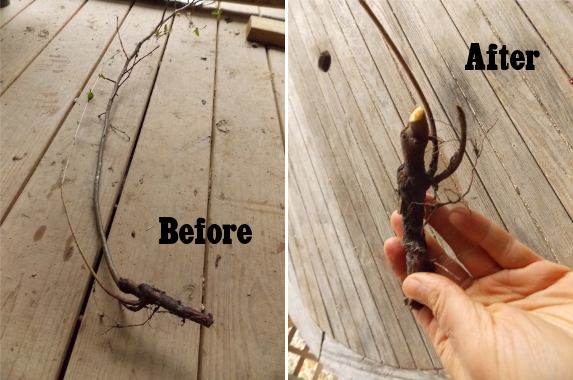
Babying a poorly rooted transplant

Mom and I like to swap plants, so on her most recent visit, she brought me a sucker
from a flowering quince bush and I gave her a few suckers from an
elderberry bush. None of the suckers had many roots, and the
quince had a pretty tall stem. Would it survive?
The first step when you
end up with a perennial that has far more top growth than bottom growth
is to whack back the stems to be more proportional to the roots.
You definitely want to remove any flower buds, too, since your little
transplant shouldn't be worrying about reproduction this year.
(But feel free to put those bud-covered stems in a vase for a bit of
early spring color inside.)

If you've got several
plants like this, it's generally a good gamble to go ahead and plant
them outside after pruning, but if you really want to make sure that
each plant survives, throw it in a pot and let it grow in the house for a
while. Moderate light levels and ease of watering will help the
plant get its feet under it over the next few months, at which point it
will fare much better when returned to the outside world.
This type of babying is
also handy if you get plants from a friend who lives in a warmer climate
than you do. Mom's quince was already leafing out, and I knew we
were going to get freezes the next few nights, so I figured it would be
happier indoors than out in the cold ground.
Thanks for the quince, Mom! I'm looking forward to sour fruits and pretty flowers in a year or two.
Want more in-depth information? Browse through our books.
Or explore more posts by date or by subject.
About us: Anna Hess and Mark Hamilton spent over a decade living self-sufficiently in the mountains of Virginia before moving north to start over from scratch in the foothills of Ohio. They've experimented with permaculture, no-till gardening, trailersteading, home-based microbusinesses and much more, writing about their adventures in both blogs and books.
Want to be notified when new comments are posted on this page? Click on the RSS button after you add a comment to subscribe to the comment feed, or simply check the box beside "email replies to me" while writing your comment.
